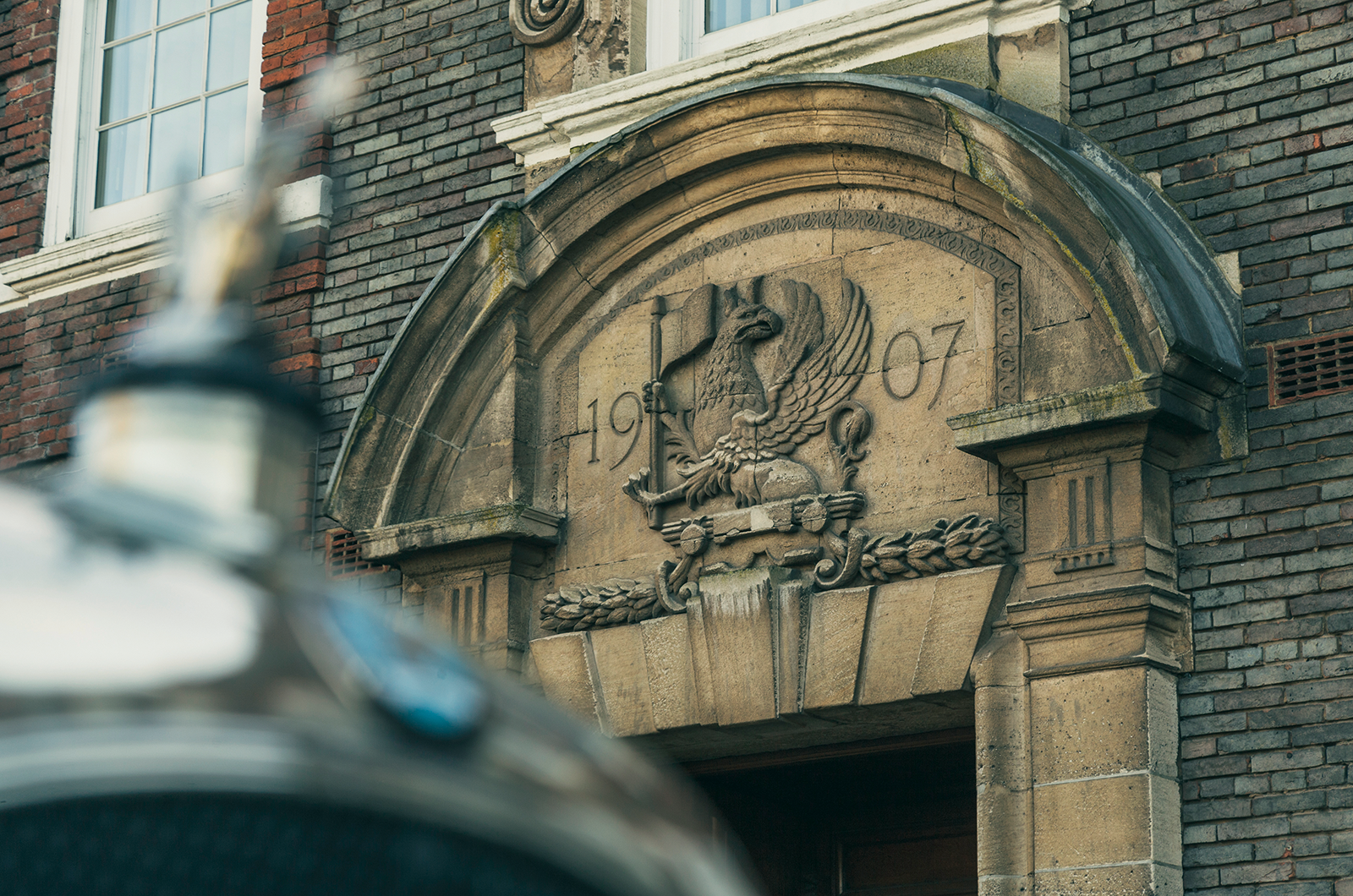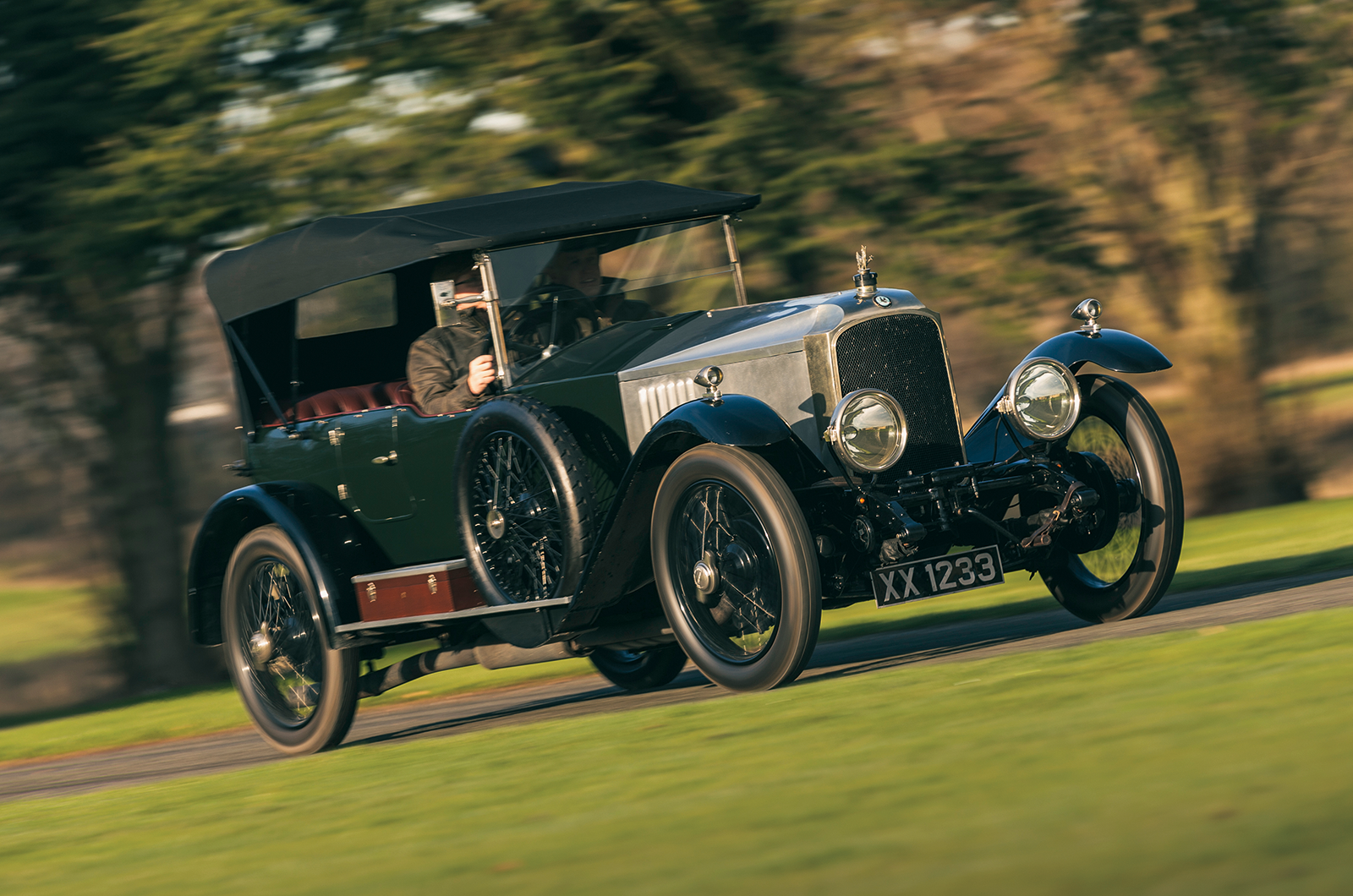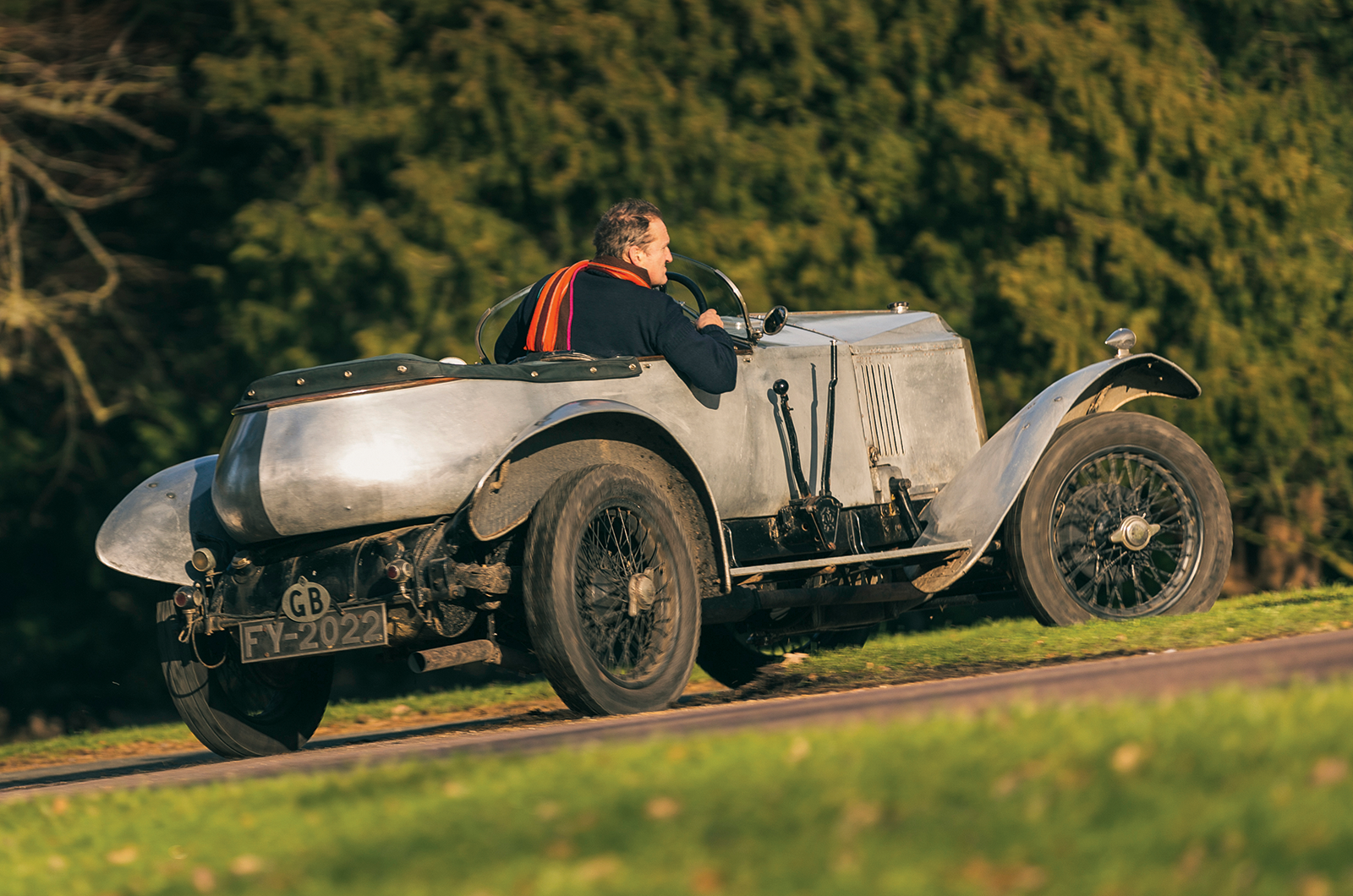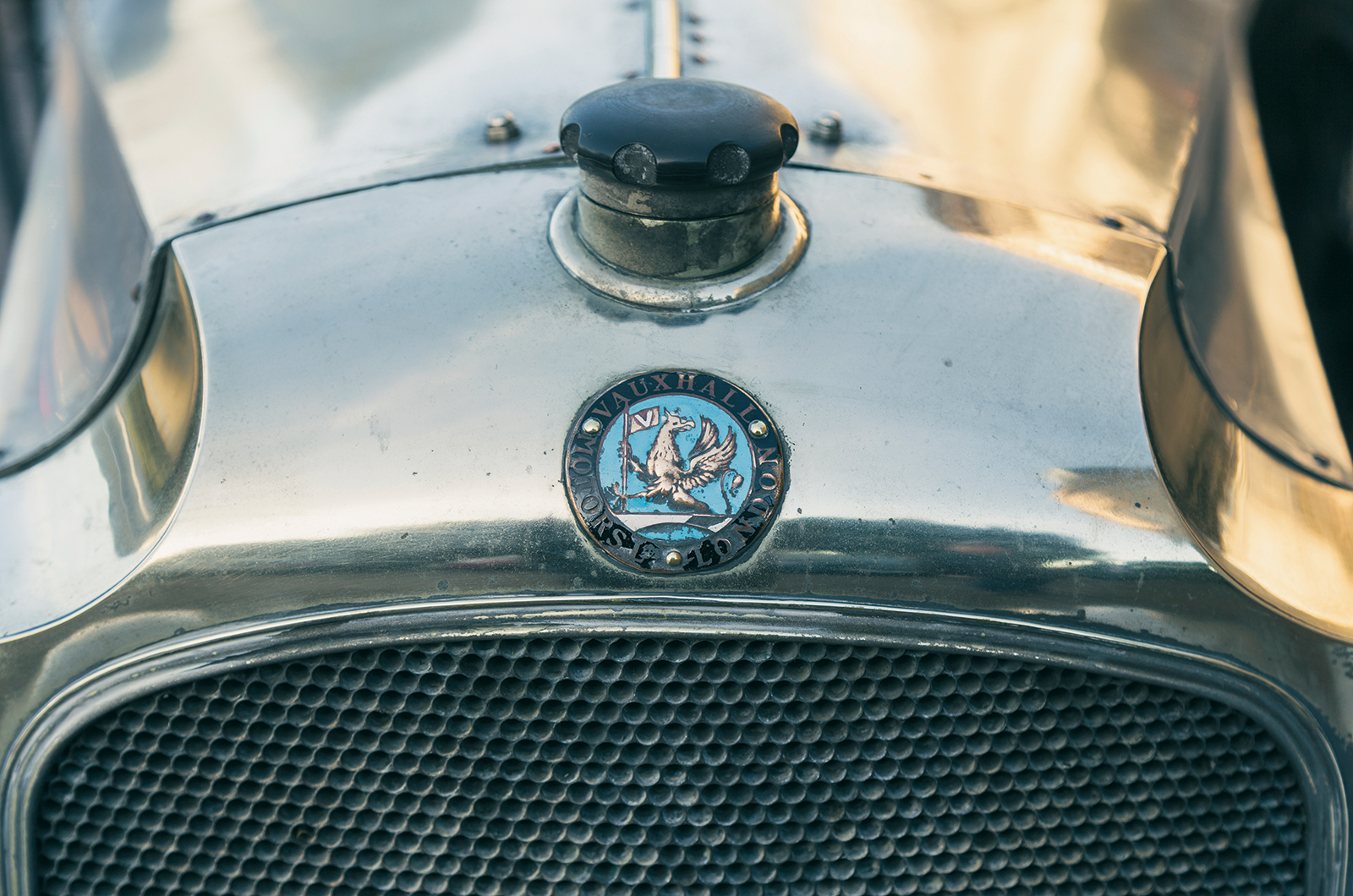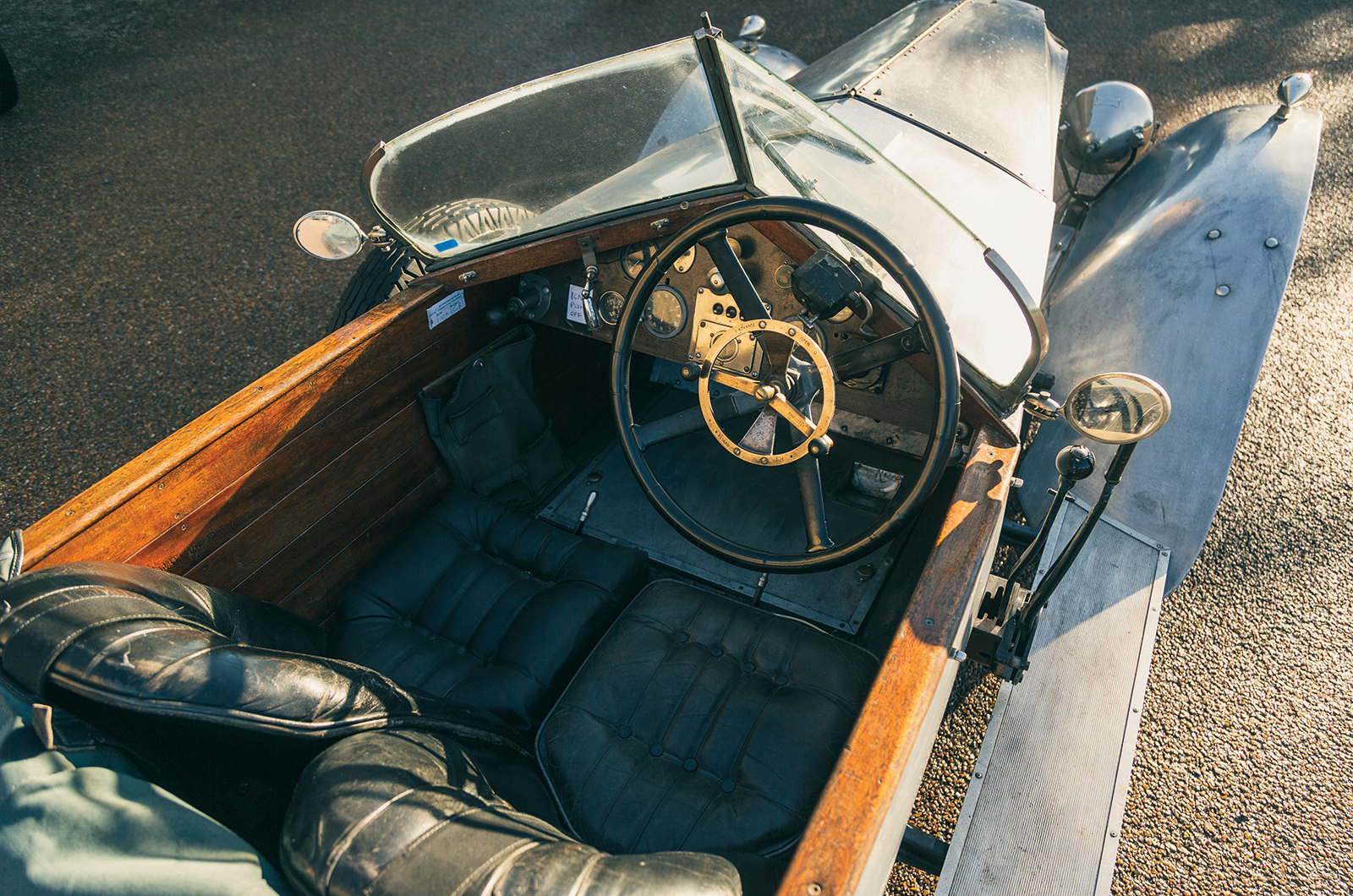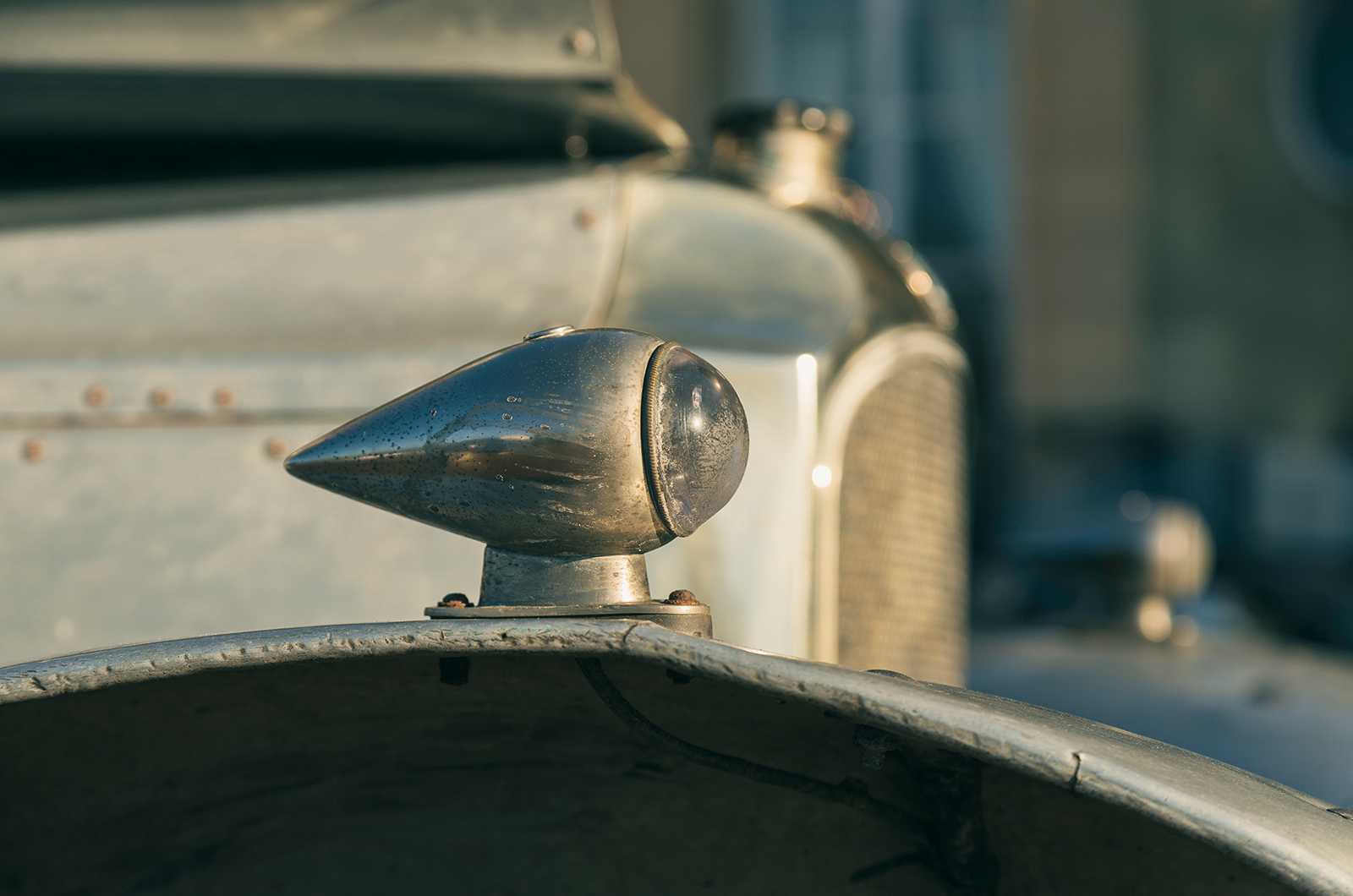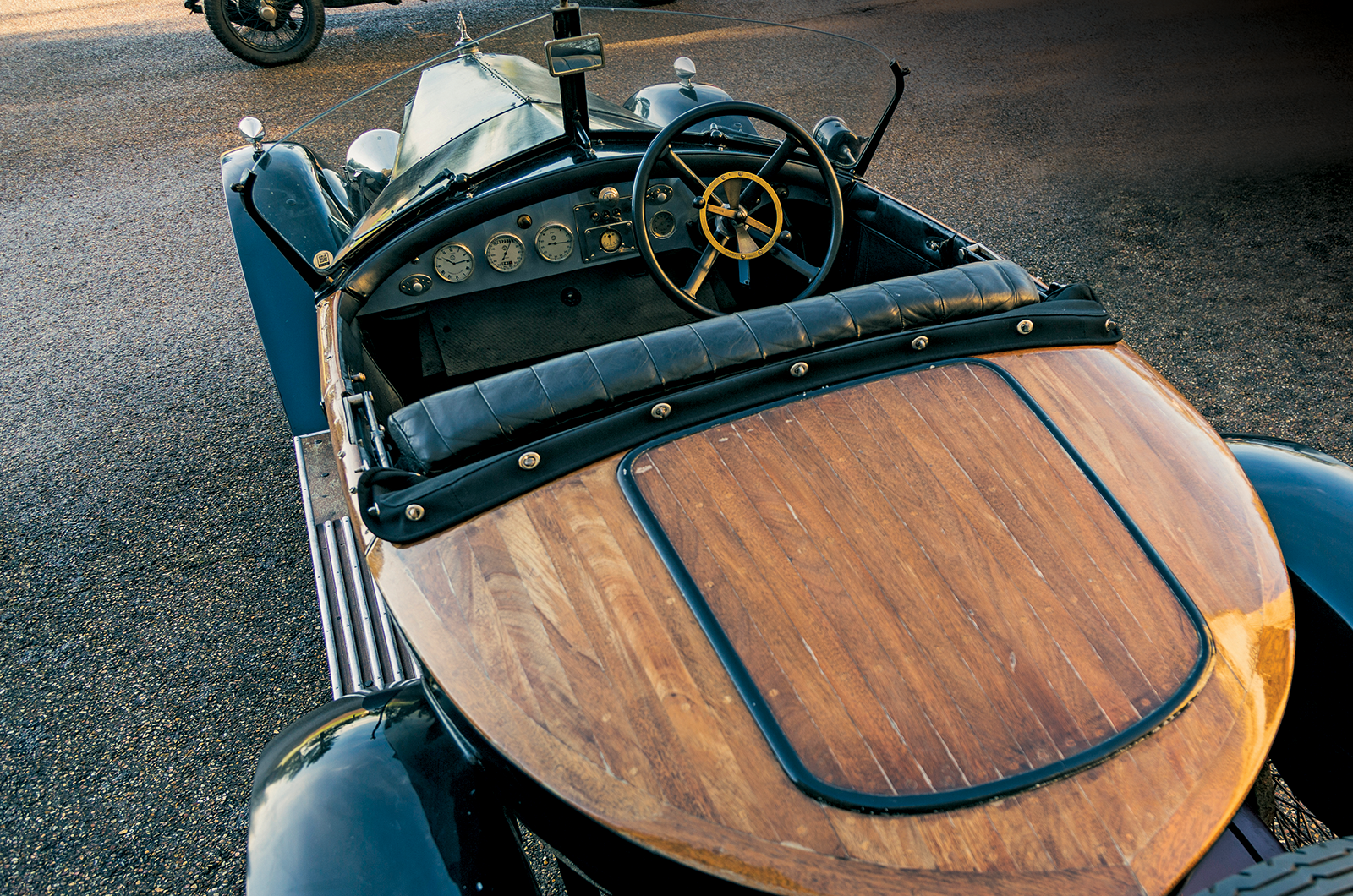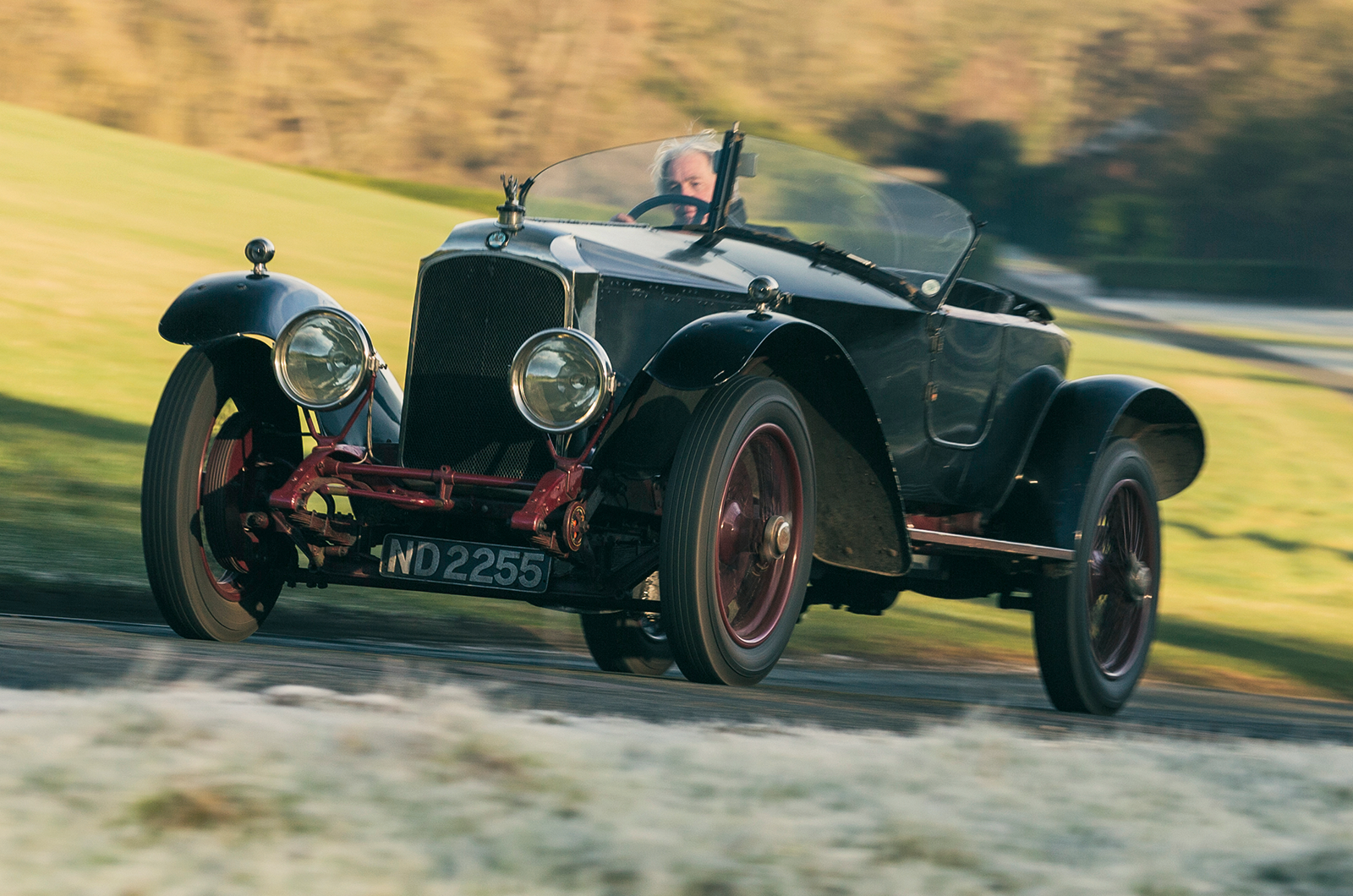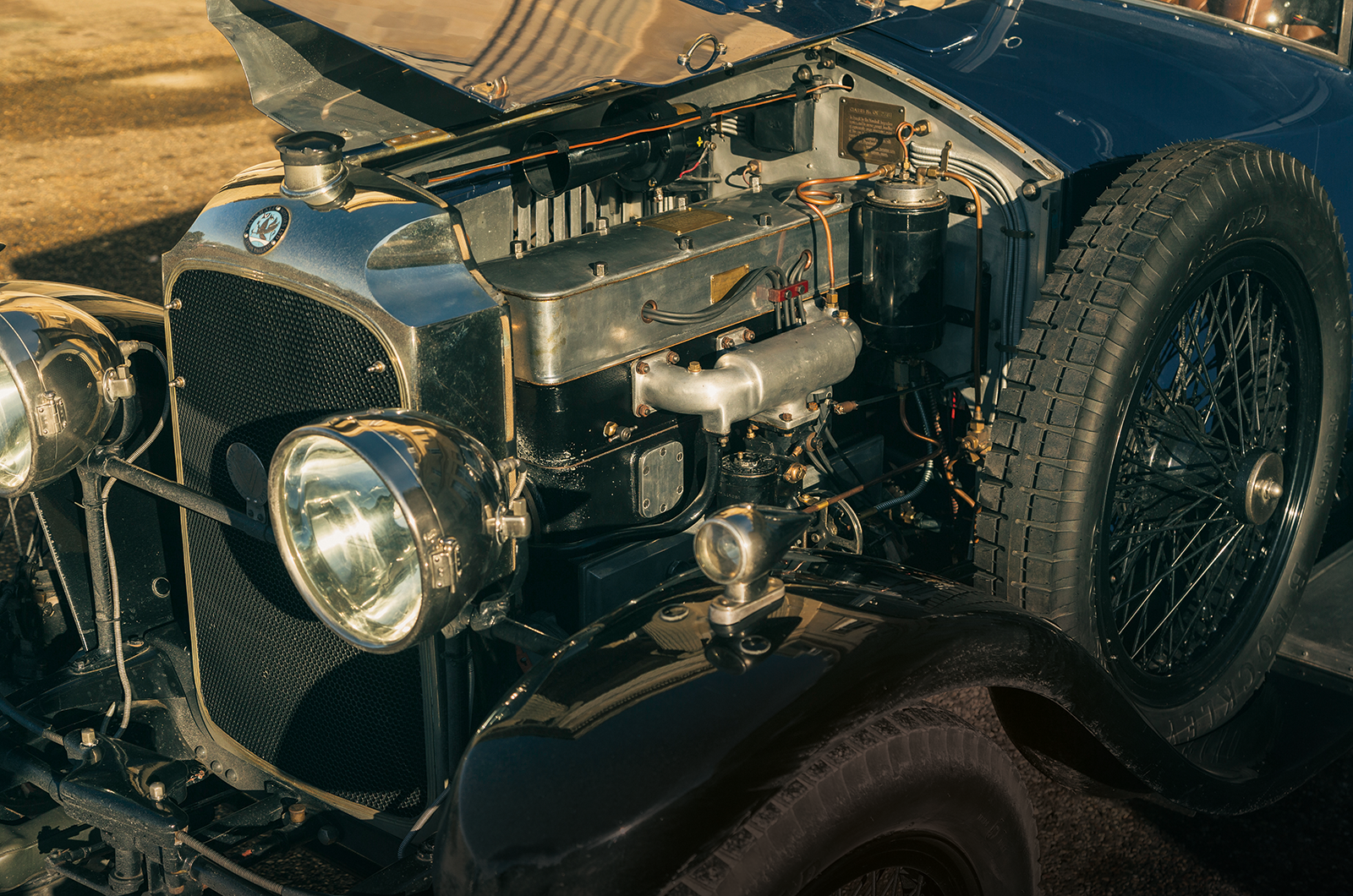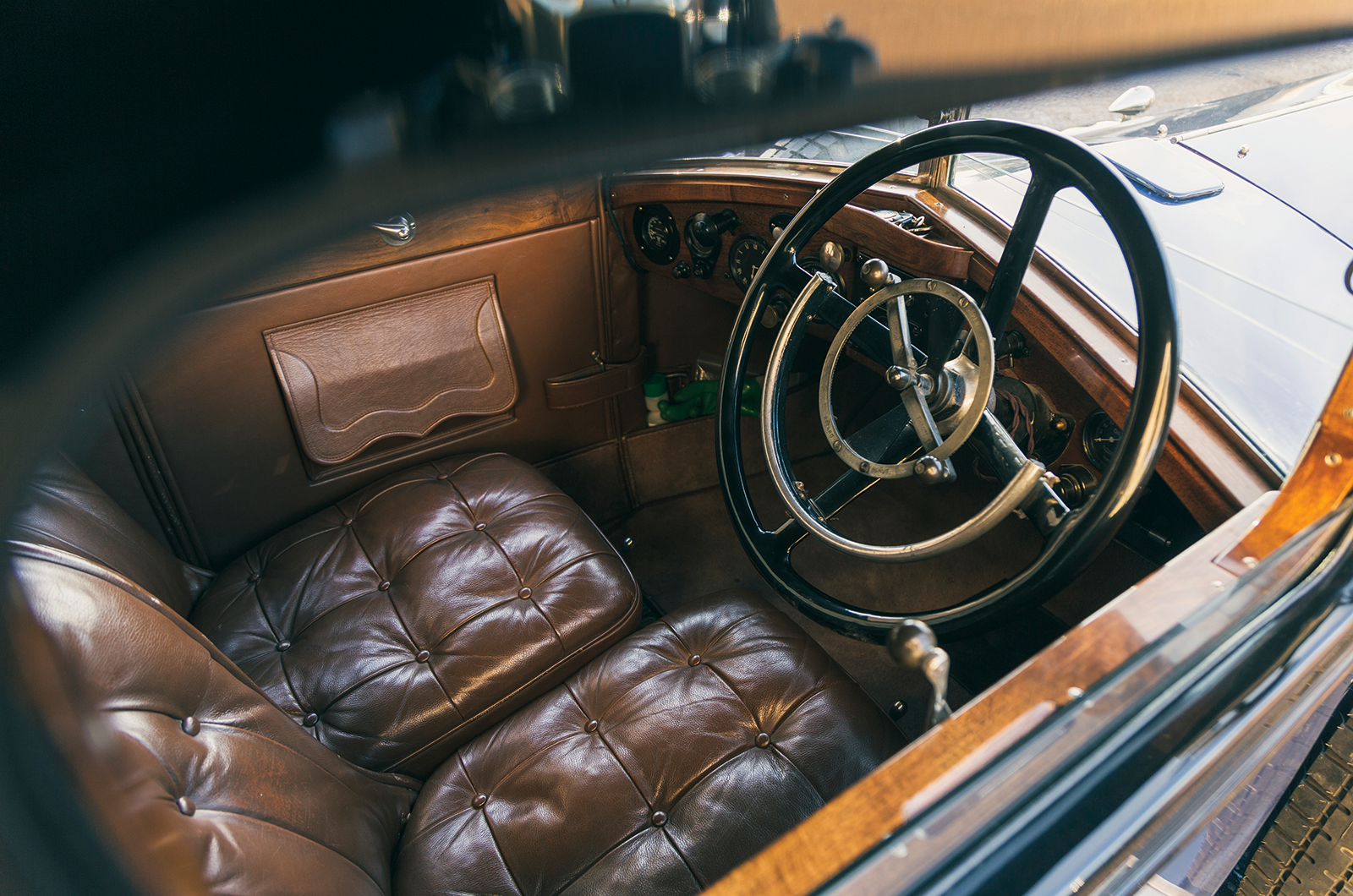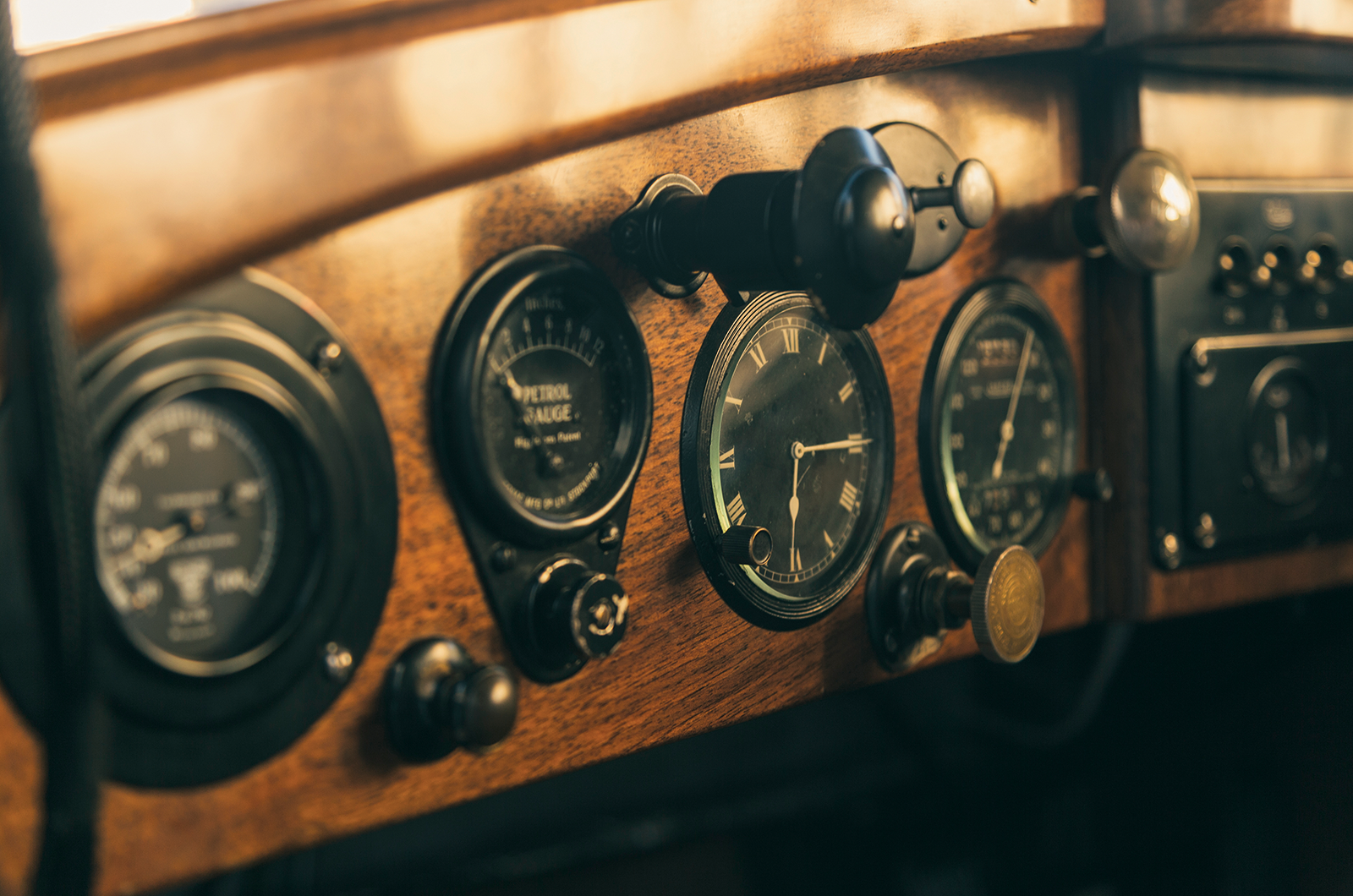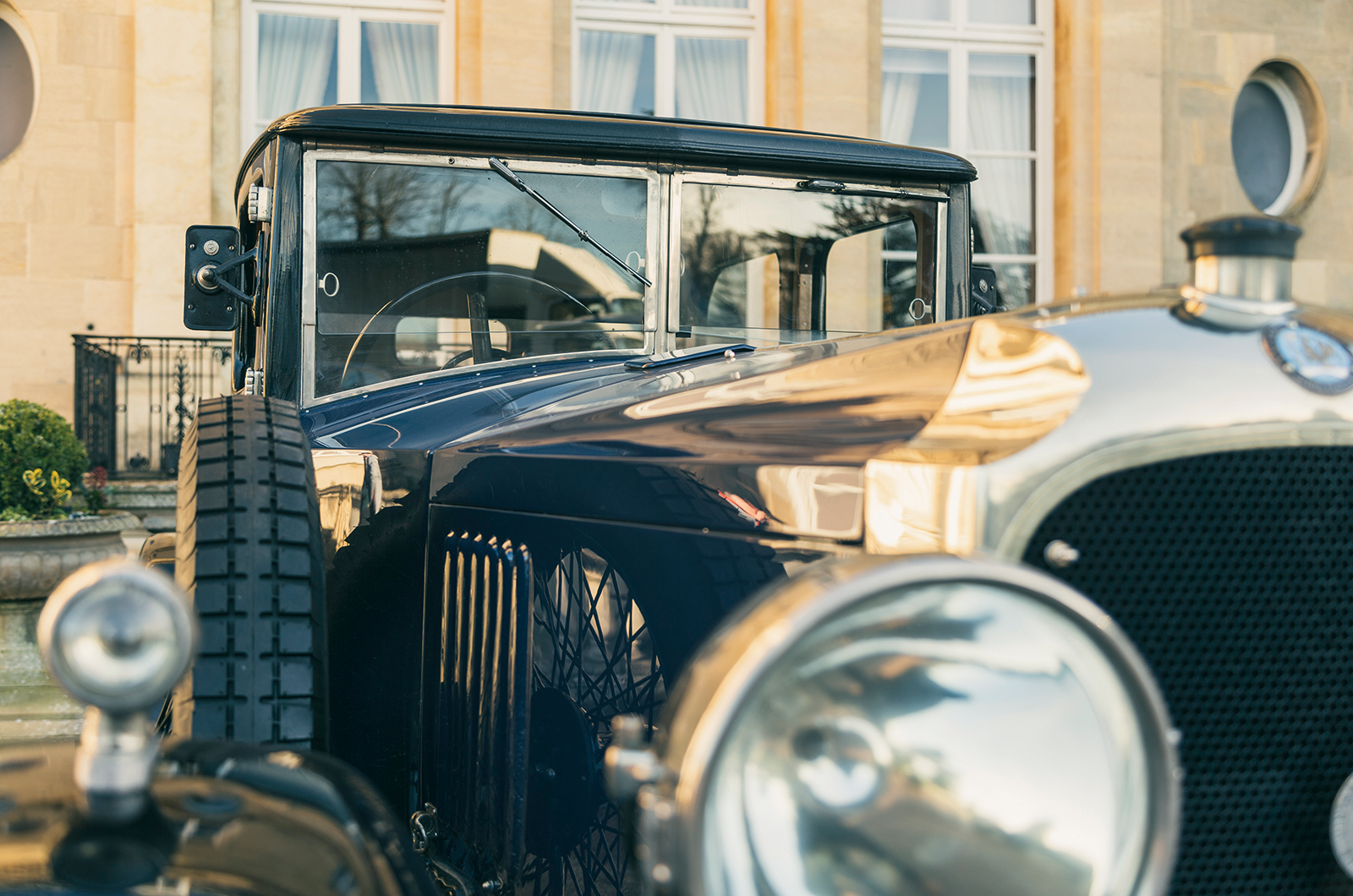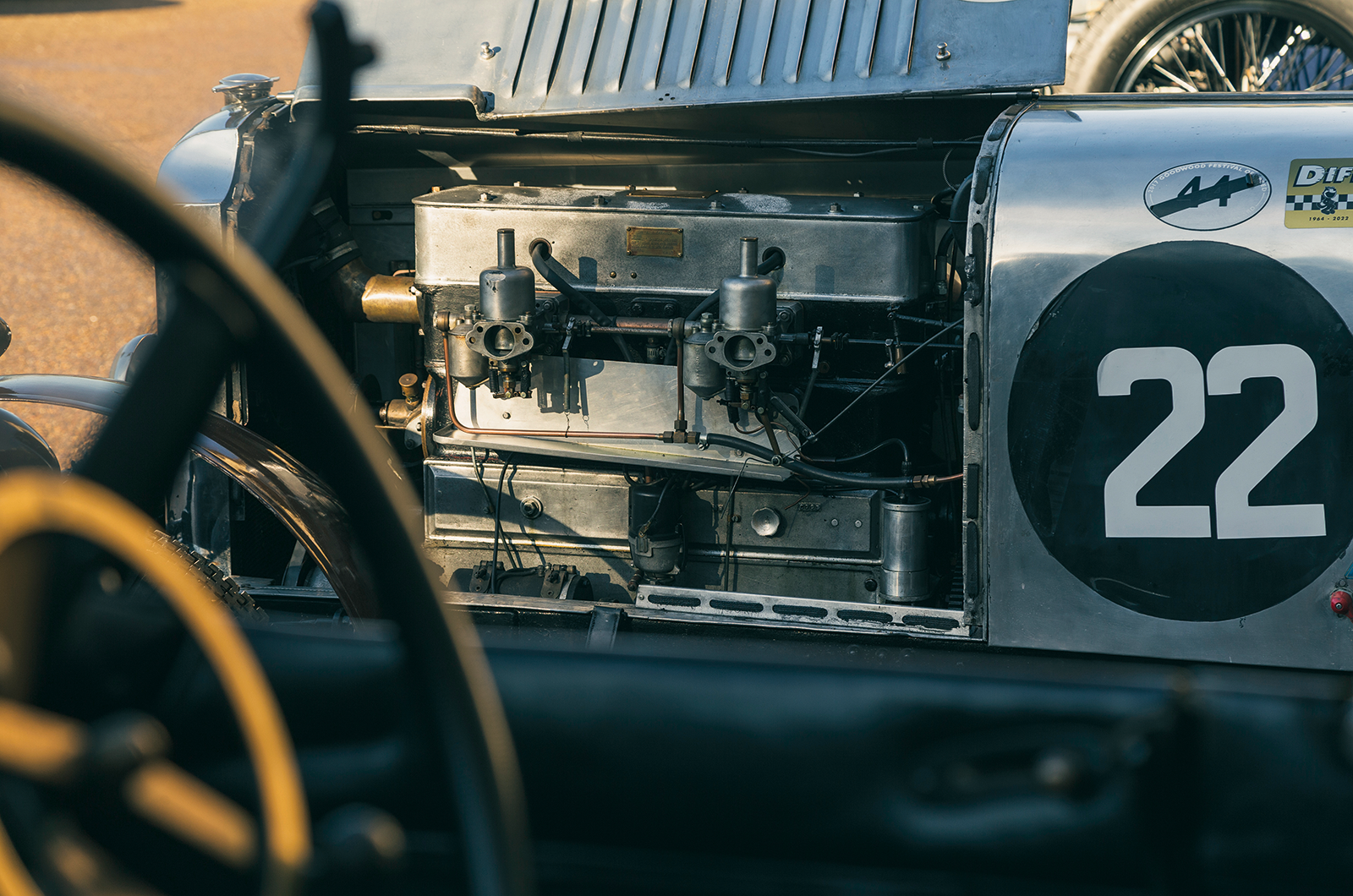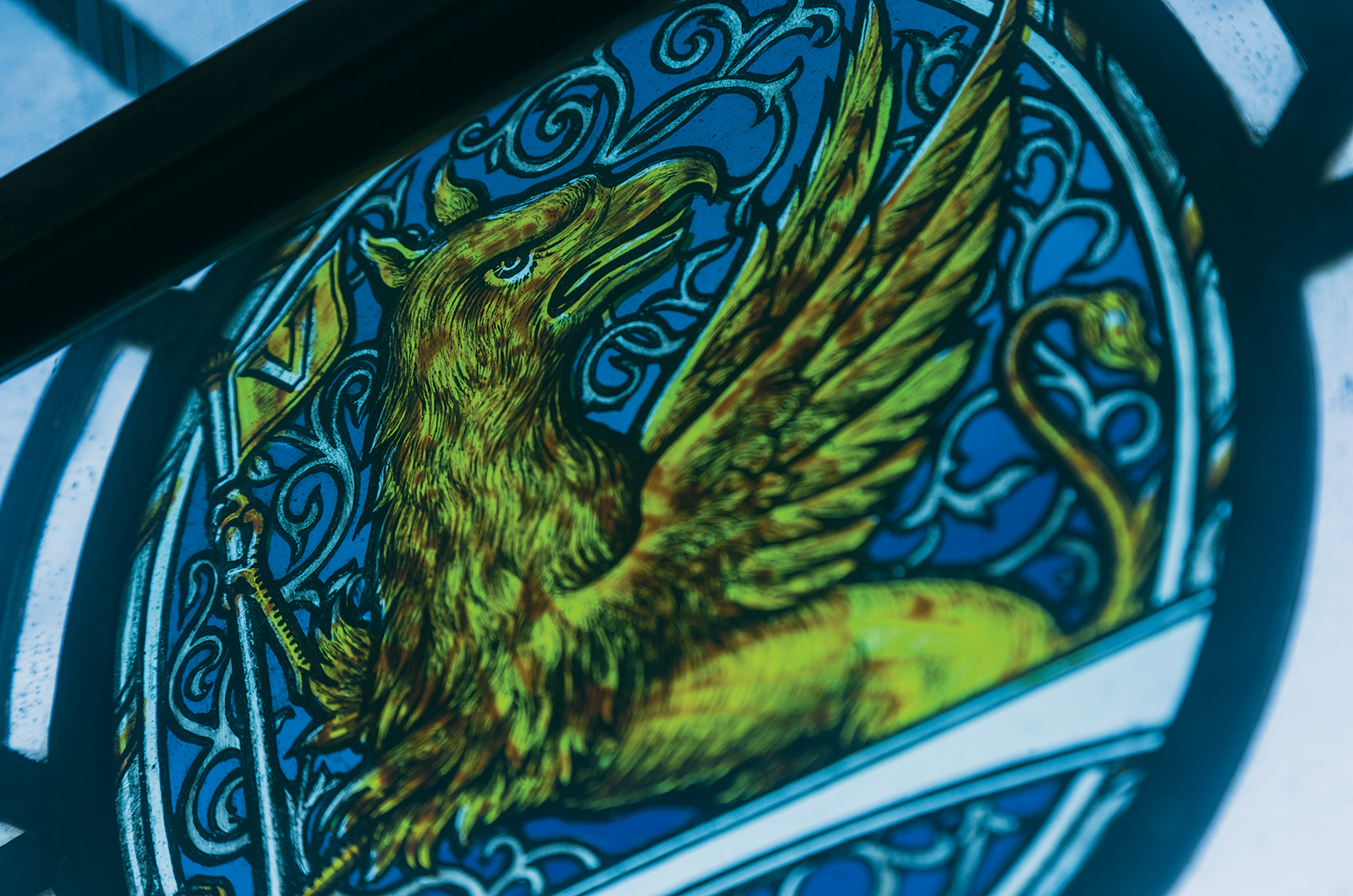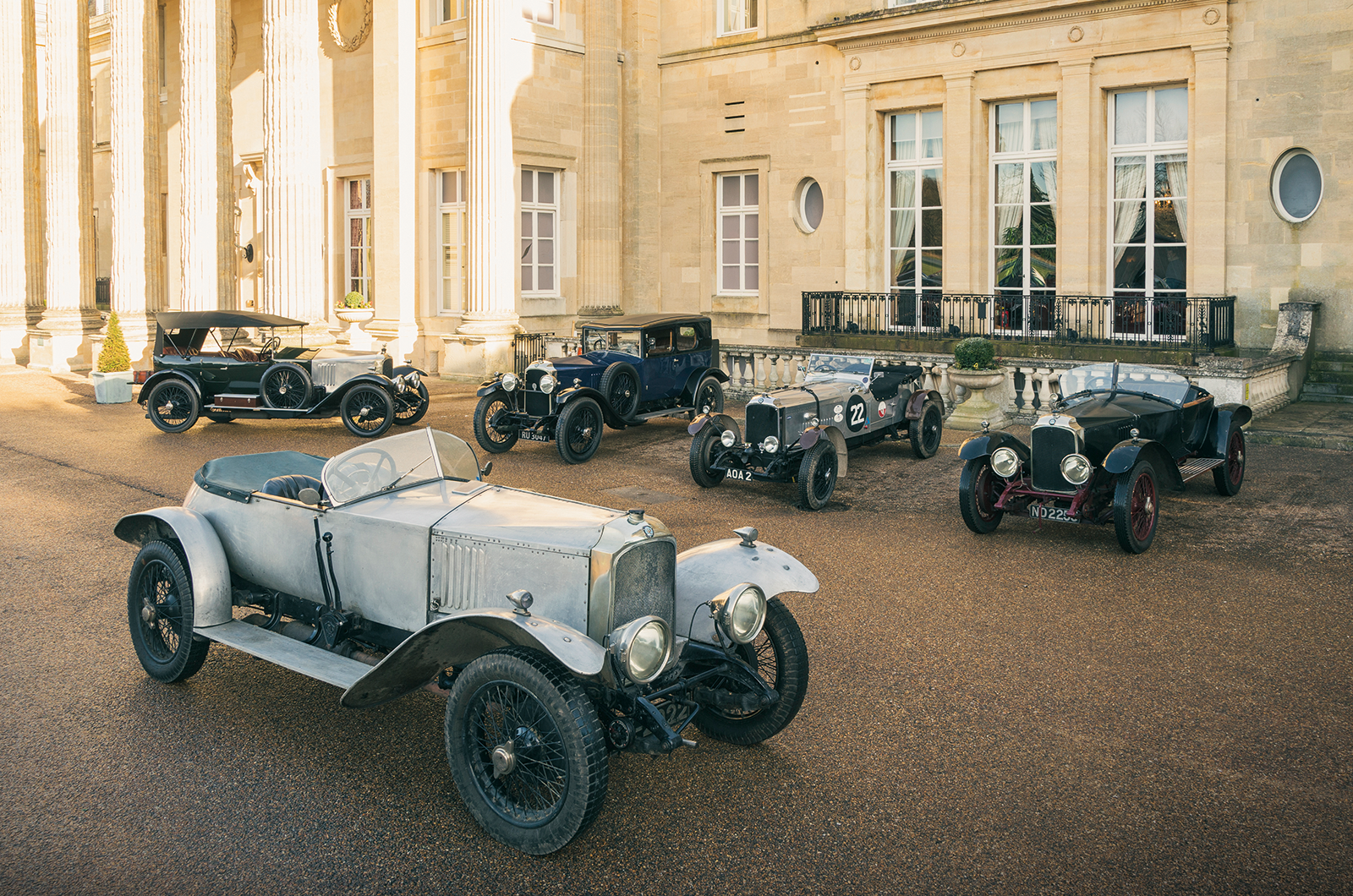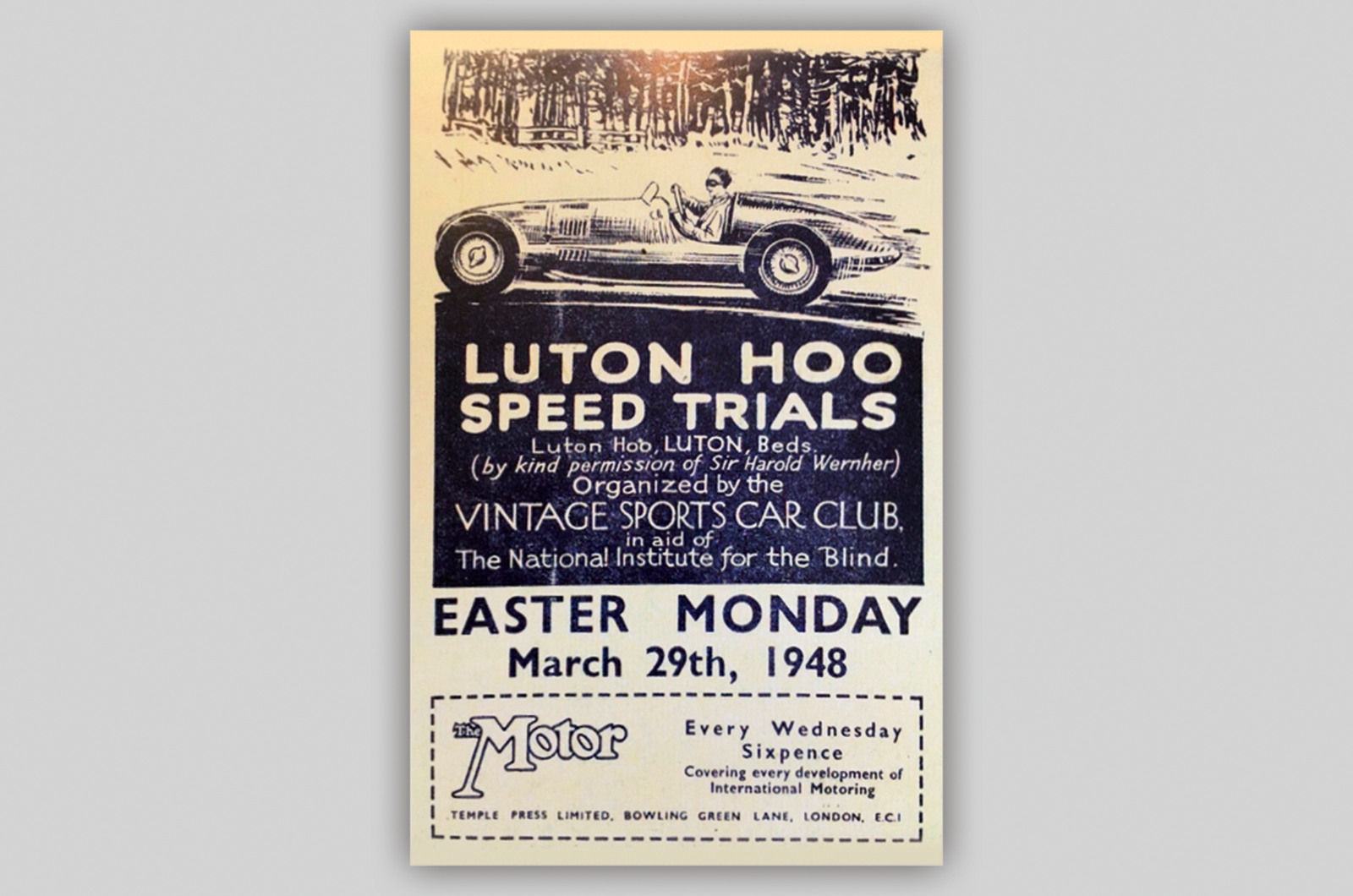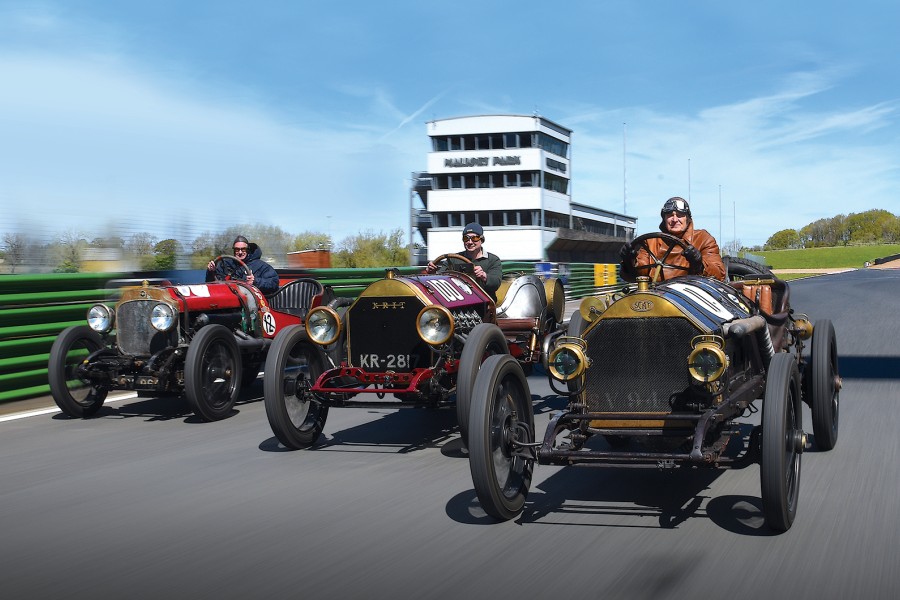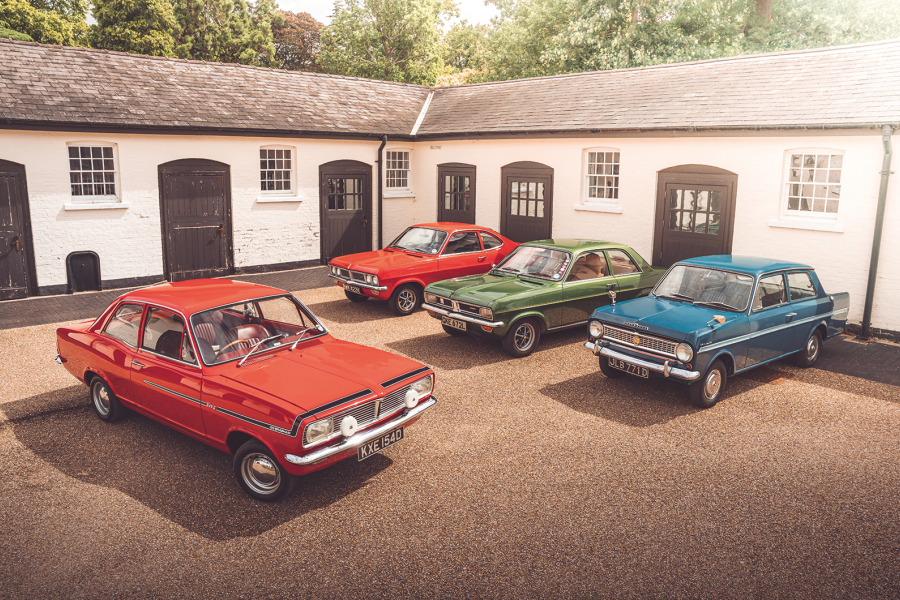Once up to speed, the steering is surprisingly light with minimal play, and all the controls function with a well-oiled precision – even if the outside brake lever needs a forceful tug to haul it to a halt.
Unlike the Velox, you can enter Charlie Bishop’s 1926 OE Clinton Saloon replica on the driver’s side.
Of the 40 saloon bodies made, none survive; OE278 was originally built as a saloon, but when discovered in a barn 27 years ago its body had disintegrated to the extent that a new one had to be made from scratch.
It’s now the only 30-98 saloon in the world, and mechanically on the button, its engine replete with a new cylinder block and head.
The Clinton Saloon’s raised headlights betray its post-1925 production
Based on the richness of its cabin architecture alone, and the well-appointed rear space, this would have been a tough act for Bentley to follow.
Perched behind a split front ’screen, the taper of the Clinton body means a smaller footwell, added to which the handbrake joins the gearlever inboard.
Its torquey performance is on a par with the Velox – as is the remarkable pace it carries – and the tautness and near-silence of the body-on-frame structure is impressive.
The lavishly trimmed cabin makes this Clinton Saloon the most luxurious car here
Tim Jones’ 1925 Wensum-bodied OE was originally built as a Clinton Saloon, too.
It fell on hard times after the war, and was found pulling a lawnmower across a cricket pitch by VSCC president Tim Carson in 1952.
Carson rebodied it as a Special, similar to the 30-98 he’d raced in the ’30s, but, as Jones discovered when he acquired the car as a student in 1985, it had been shortened, losing its strengthening crossmembers.
Tim restored the chassis to factory spec and fitted the replica Wensum body it wears today.
‘The OE-type 30-98 was Britain’s first catalogued 100mph production car, which, given Vauxhall’s pre-war track record as a maker of “superexcellent” sporting machinery, was no great surprise’
In the past 40 years it’s been in constant use, taking in circuit racing and hillclimbs as well as annual family holidays (sans hood) to France and Cornwall.
No doors here, so you vault over the body and find yourself ensconced in a beautifully patinated cabin, more akin to a vintage pleasure craft than a sports car.
Yet another variation has both handbrake and gearlever outside the body, though with this car featuring the later hydraulic system, you do most braking via the right-hand brake pedal.
Charlie Bishop’s car is the only 30-98 saloon in the world
You drive with your right arm hanging outside the body, such are the Wensum’s narrow dimensions, but this is easily the second-fastest OE here.
Blatting up Hoo’s hill, its main controls and chassis dynamics are honed to perfection; you really do feel as if you could drive it anywhere.
Once upon a time, that was true of Charlie Prince’s 1923 Mulliner Boat Tail OE.
Starting life as a factory Velox, its first owner took it to Persia (now Iran), where it stayed until his death a few years later.
‘Sporting Dunlop Racing tyres, cycle wings and a four-branch exhaust from the offside, AOA 2 is an OE like no other’
His son, Charles Agar, drove the car back to Manchester in 1930, recording the epic journey in The Autocar.
Its subsequent owner then had HJ Mulliner fit the Boat Tail body in 1933, and kept the car until 1966.
Like many 30-98s, this OE gained a Delage front axle along the way, and, while purists may grumble, it significantly improves the model’s greatest failing: braking performance.
It also means we have yet another different control layout, with a conventional right-foot throttle.
AOA 2’s non-standard twin carbs
Practical, with a relatively spacious two-seater cabin and a capacious boot in its tapered tail, the Mulliner is a refined antidote to Tim’s pared-down Wensum.
If you were new to the quirks of vintage motoring, this is the car you’d bond with immediately, being the easiest to drive yet still retaining the OE’s unique character.
But we end where we started.
AOA 2 is probably the best-known 30-98 competition car, campaigned today by classic specialist Gregor Fisken.
The right-hand throttle and central gears are intuitive
Based on chassis OE152, built in 1924, the car’s racing history starts in ’33, when it was rebuilt to TT regulations as a Special for owner Ronald Hughes.
A string of successes followed its first outing at Brooklands in ’34, including setting the fastest pre-war time at Shelsley Walsh, as well as podium finishes at notable Brooklands races such as the 1936 Whitsun Mountain Handicap and the ’37 Easter Mountain Handicap.
Hughes sold the car in 1943, and its following three owners continued to use the car competitively, with only minor cosmetic changes made along the way.
There are still nods to the past at the old Kimpton Road Vauxhall headquarters
With Luton Hoo’s ‘track’ before us, AOA 2 is in its element.
Sporting Dunlop Racing tyres, cycle wings, and a four-branch exhaust from the offside bonnet panel, this is an OE like no other.
You engage a tall first through a central lever (still a reverse-H pattern) and floor the right-hand throttle.
All hell breaks loose, but the frantic pace is matched by a chassis that feels tied down, secure and alive with response.
‘We have gathered them because all are OE-type models, which started production barely a mile from here a century ago in 1923’
Pomeroy would have been proud; and, had he been looking out from his office window at Vauxhall’s 1907 Luton HQ, where we bid our farewells, I’m sure he would have approved of AOA 2’s tyre-smoking departure…
Images: Luc Lacey
Thanks to: David Kirke; Andrew Duerden at the Vauxhall Archive; Luton Hoo hotel; Nic Portway; Charles Prince Classic Cars
Competition time at Luton Hoo
Luton Hoo hosted the first Vintage Sports-Car Club meeting in 1948
Speed trials and hillclimbs had initially been held at Luton Hoo, then the private home of the Wernher family, between 1908 and 1923, with the first event hosted by the Bedfordshire Motor Club running along a 1.1-mile road leading to the main residence.
After WW2, and despite petrol rationing threatening motorsport activity, the track was reopened and extended to 1.4 miles in total, thanks to the addition of a return leg.
The VSCC held its first meeting there in March 1948, with notable entries from Tony Crook in an Alfa Romeo 2.9, Arthur Mallock in an Austin Seven Special and John Bolster in his ‘Bloody Mary’ Special.
Leicester’s Bob Gerard took top honours with a BTD of 74.4 secs in his ERA, R4B.
Sadly, when the VSCC held the same event the following year, amateur racer Ken Jarvis struck a tree in his single-seater Austin Seven during practice and was killed.
The track was never used again.
Enjoy more of the world’s best classic car content every month when you subscribe to C&SC – get our latest deals here
READ MORE
Lancia Lambda at 100: celebrating Italy’s pioneer
Driving record-breaker Sir Henry Segrave’s Sunbeam Twin Cam
The story of a very special classic Mini
Austin Seven at 100: the car that got Britain moving
Simon Hucknall
Simon Hucknall is a senior contributor to Classic & Sports Car

